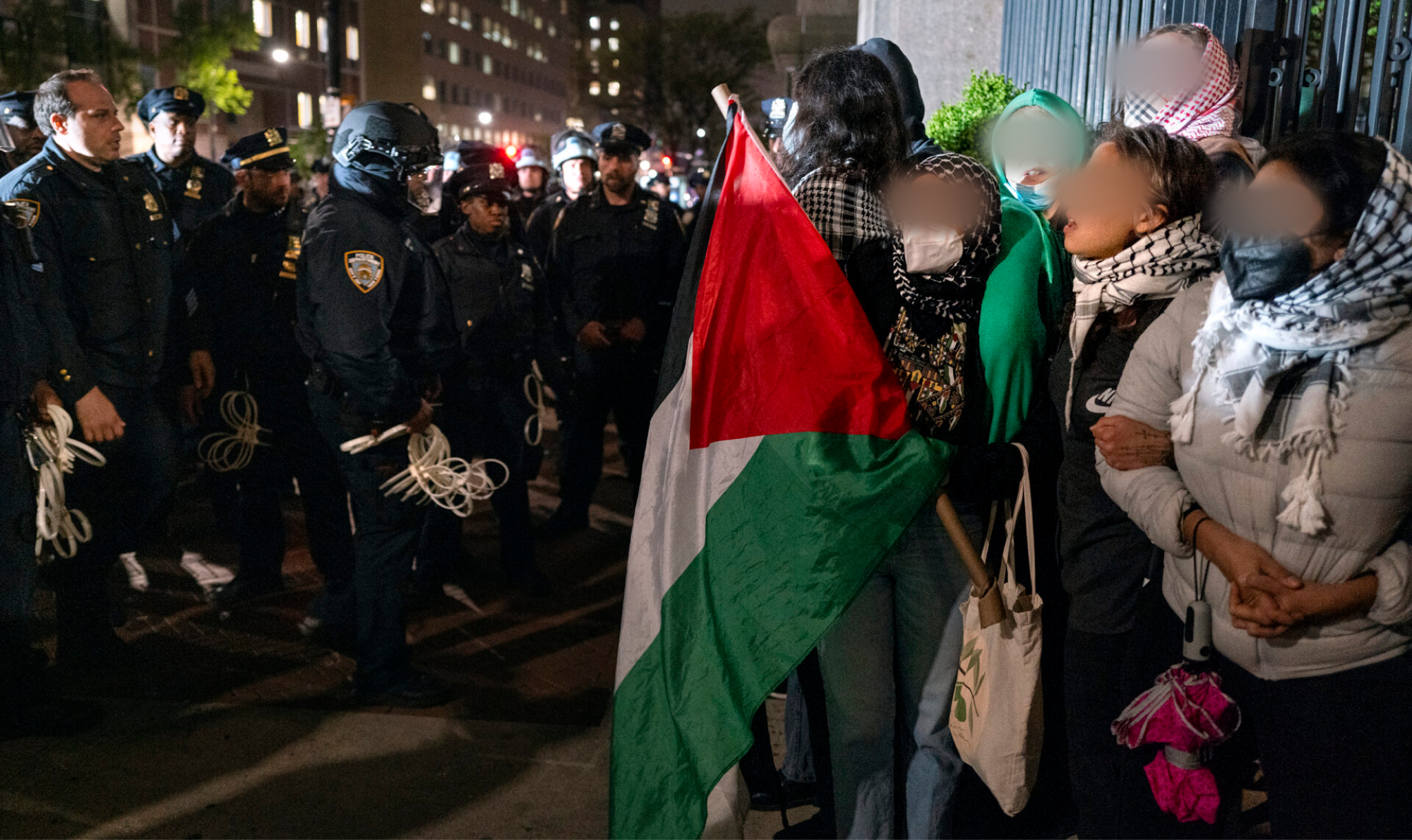
Reclaiming Solidarity: How the 'Outside Agitator' Narrative Weaponizes Division
The "outside agitator" label has historically been used to discredit activists and divide movements. This article challenges that narrative, emphasizing the power of solidarity and interconnected struggles in resisting state and corporate oppression.
Published on October 21, 2024 at 1:00 AM UTC
Graphics
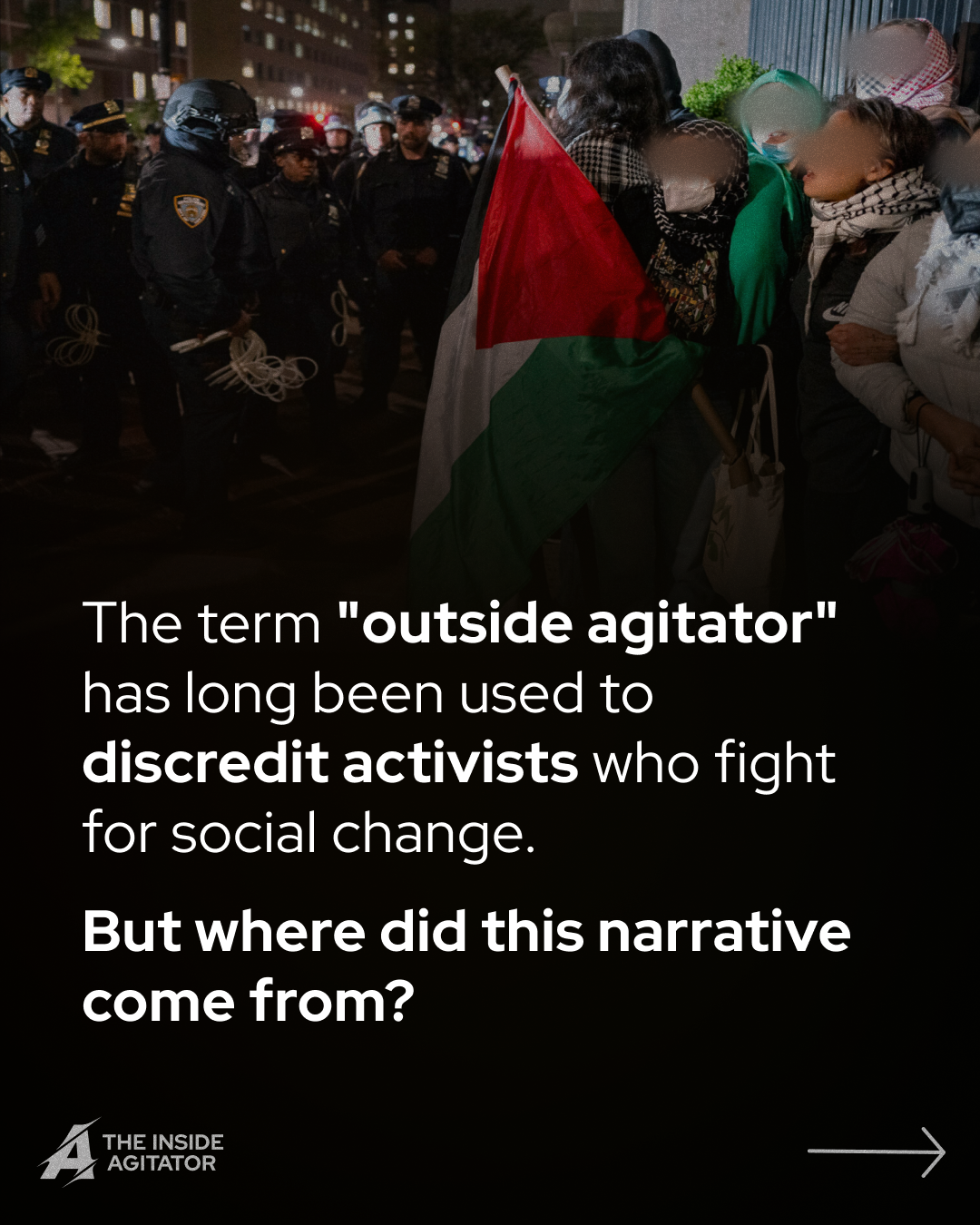
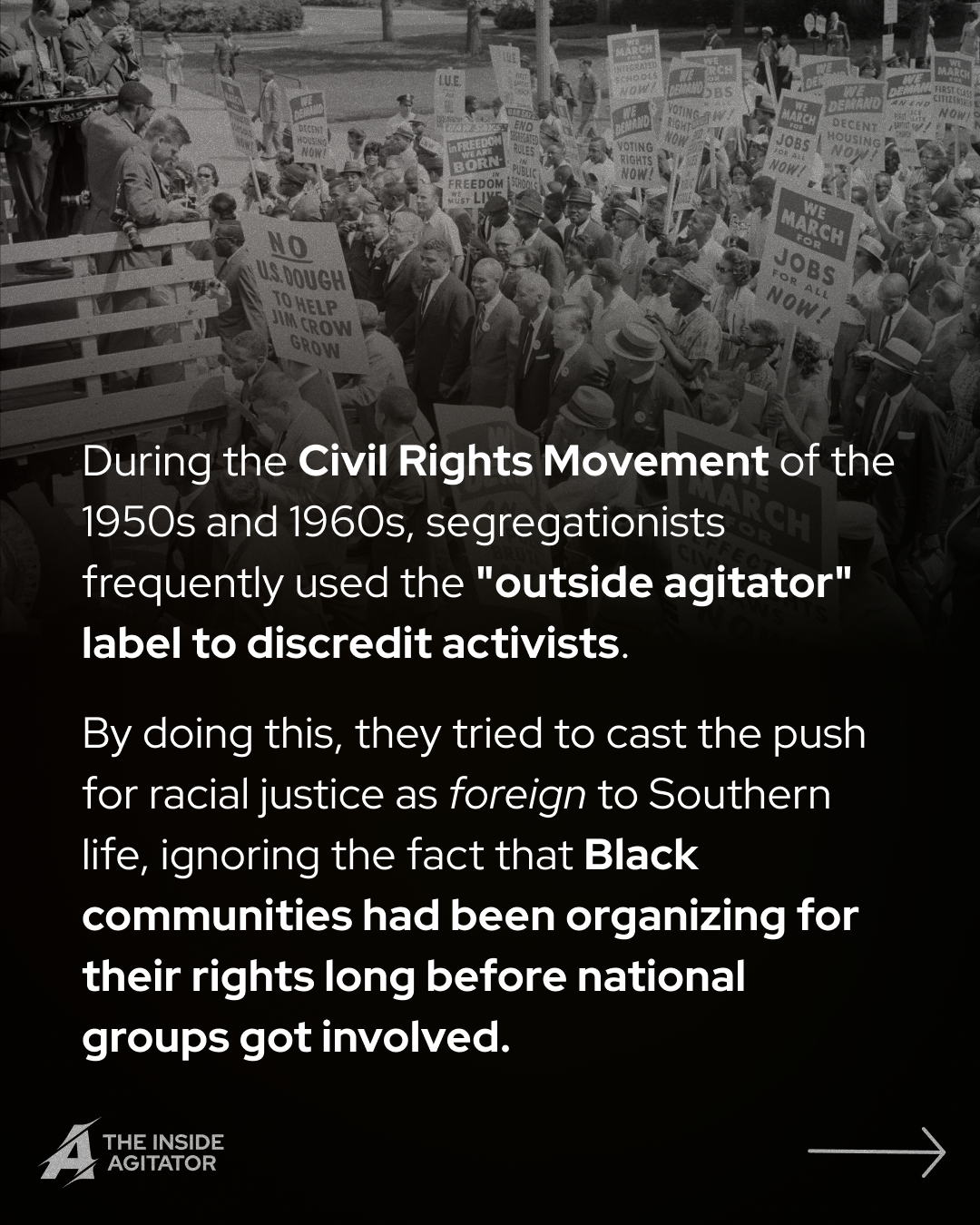
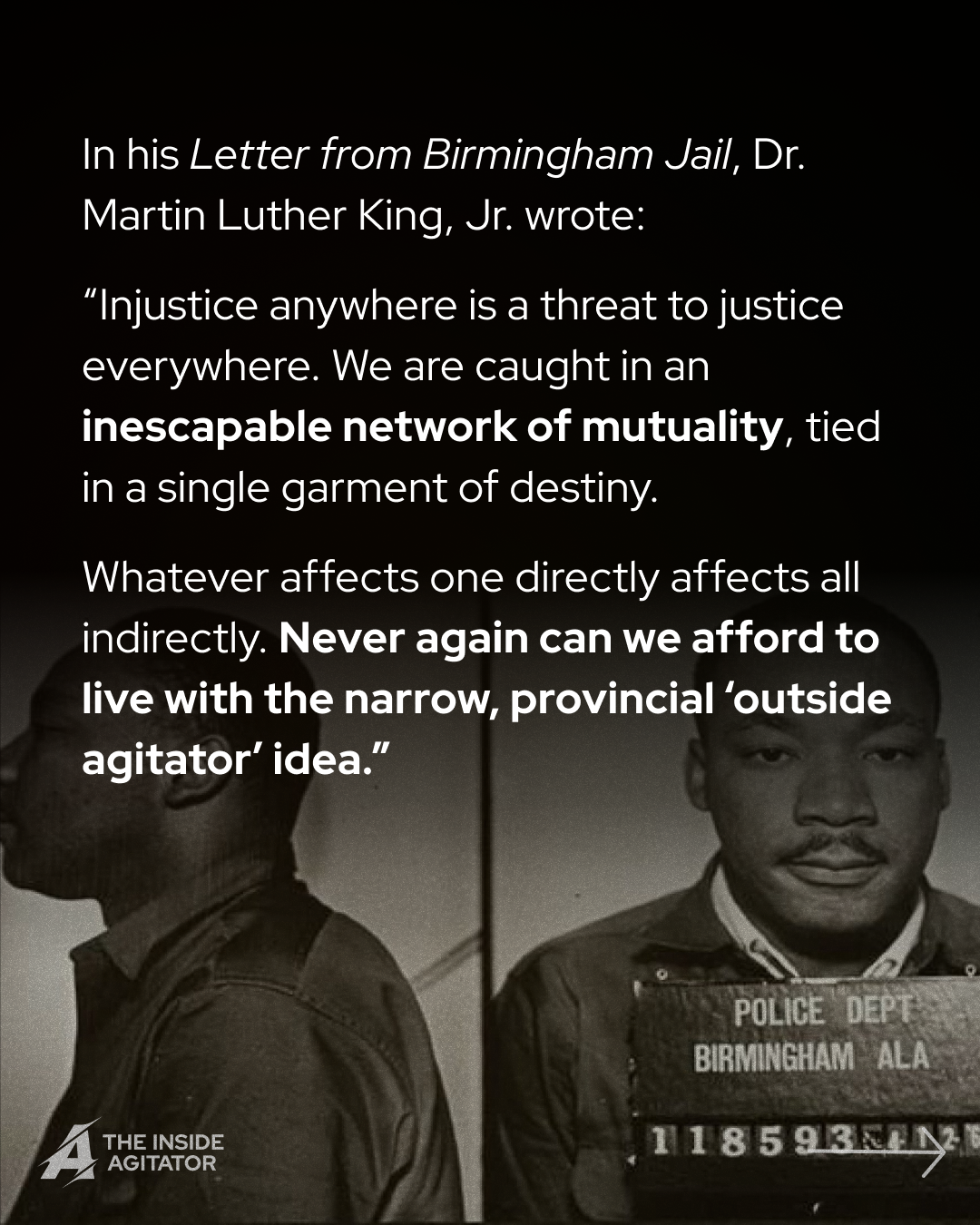
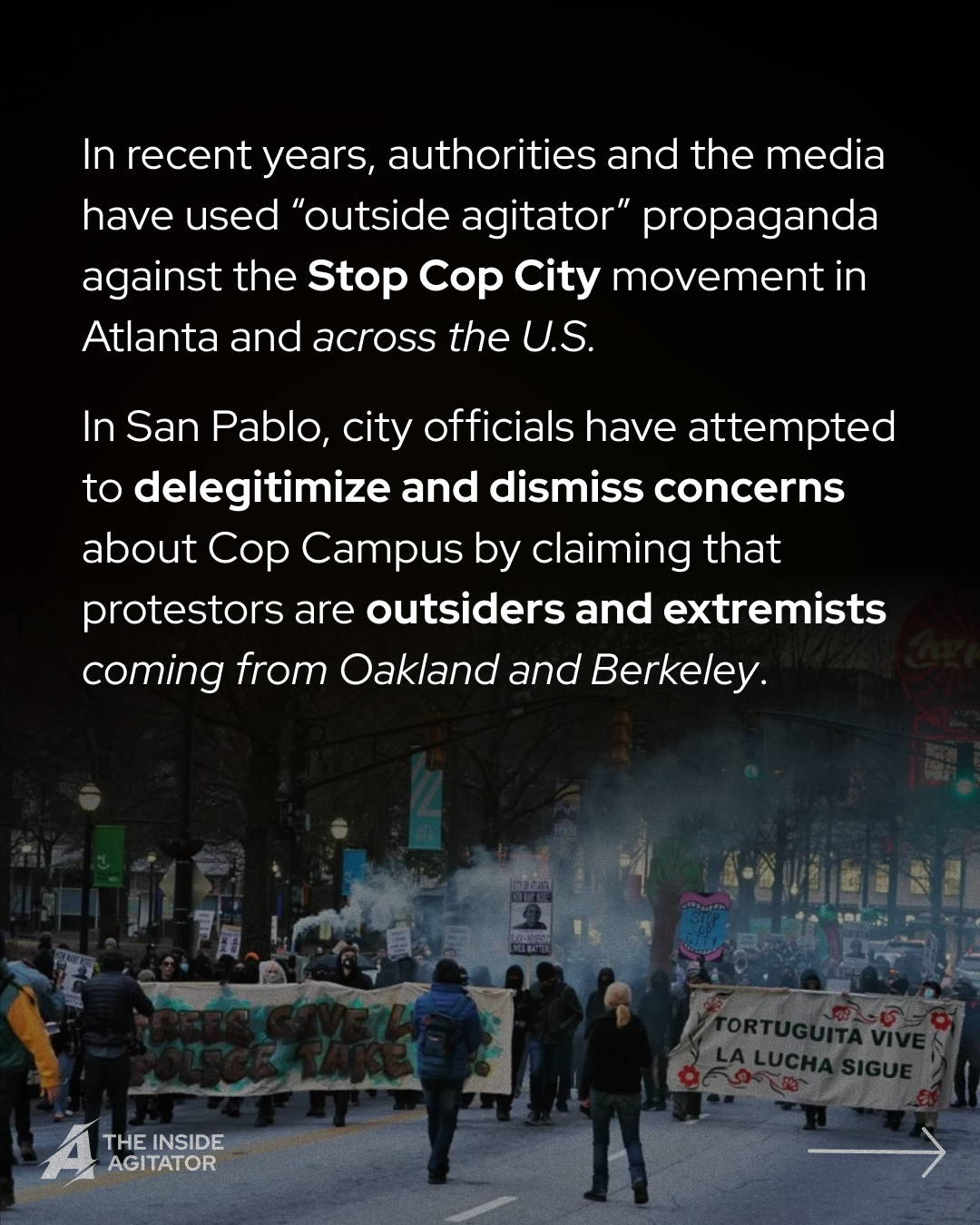
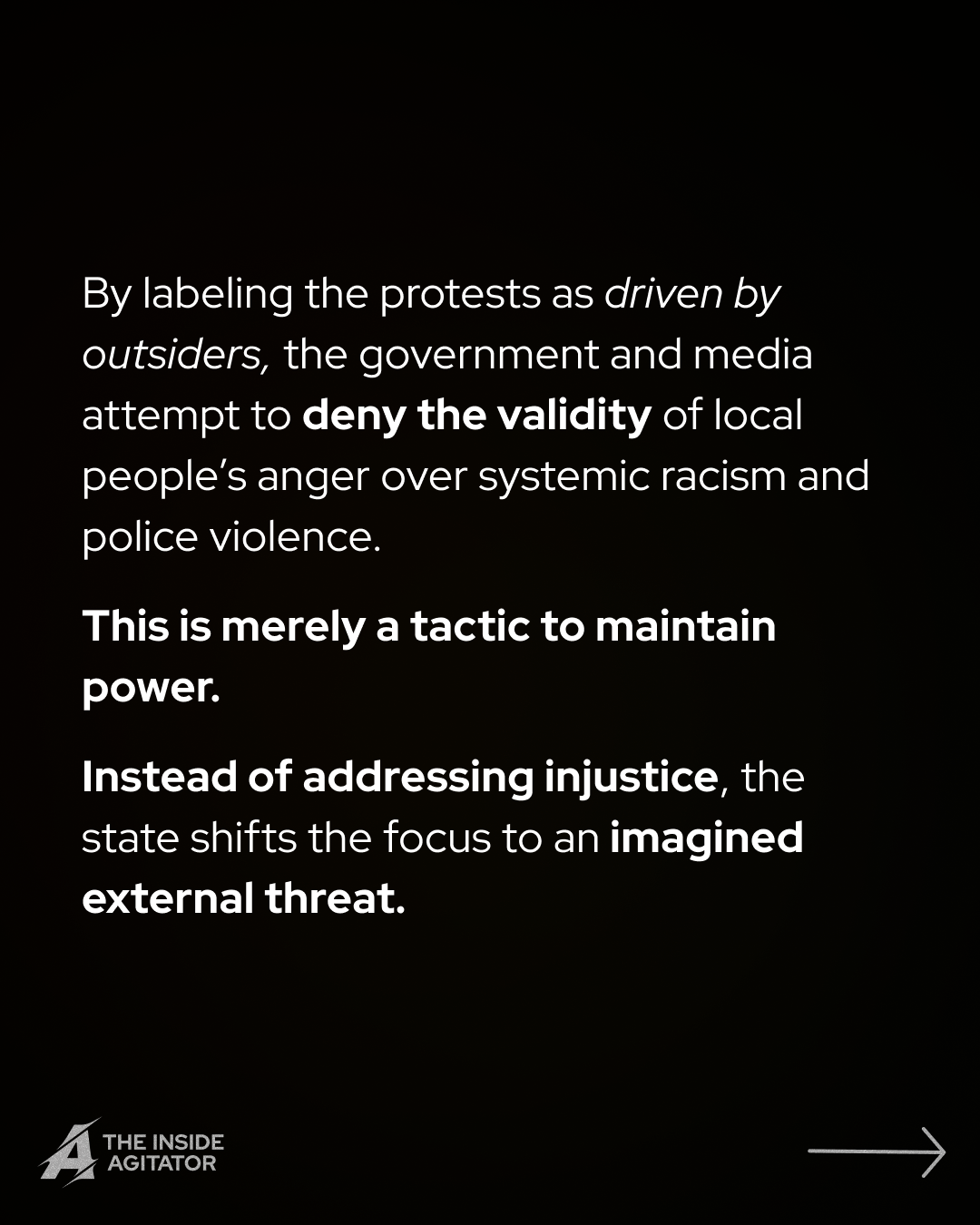
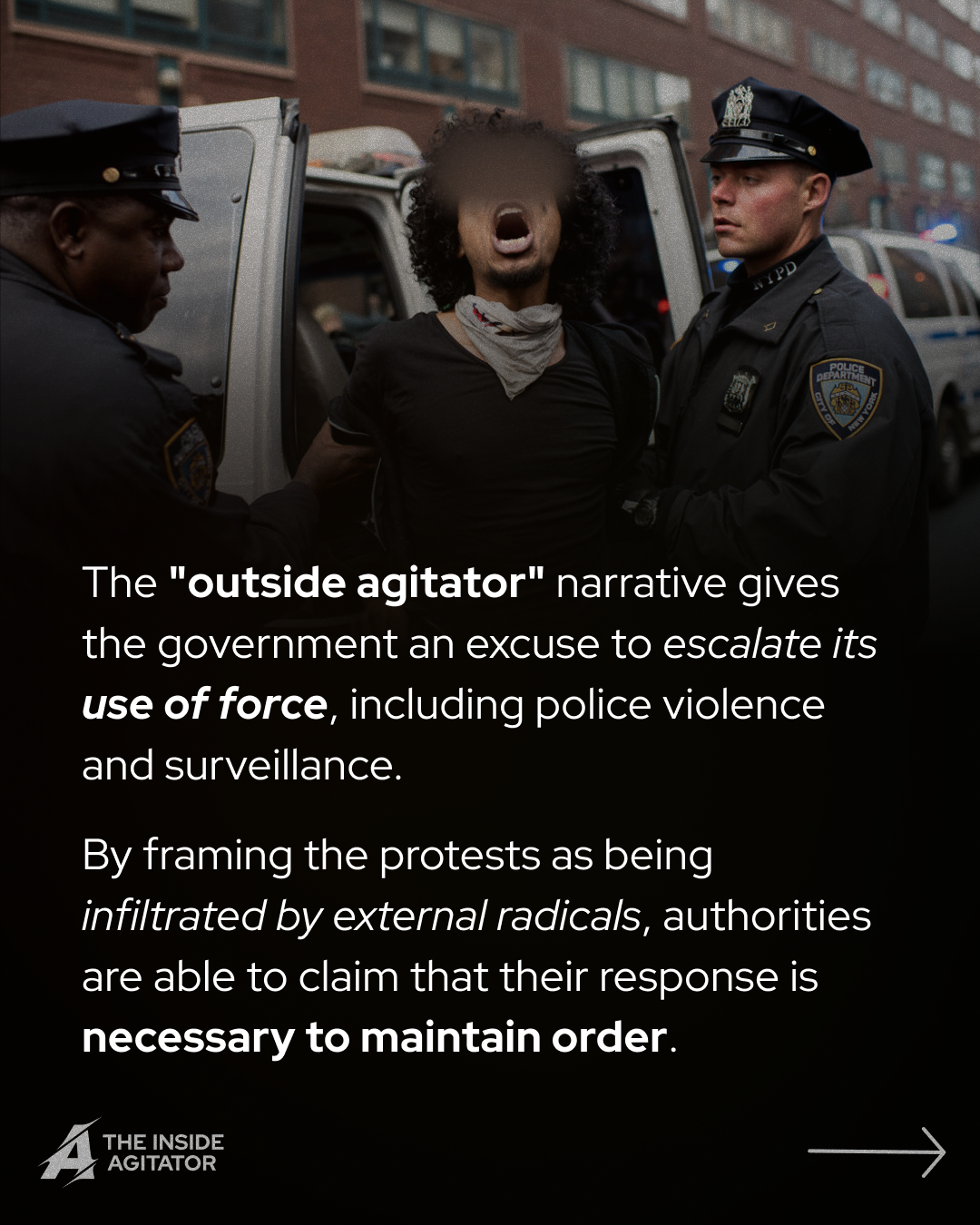
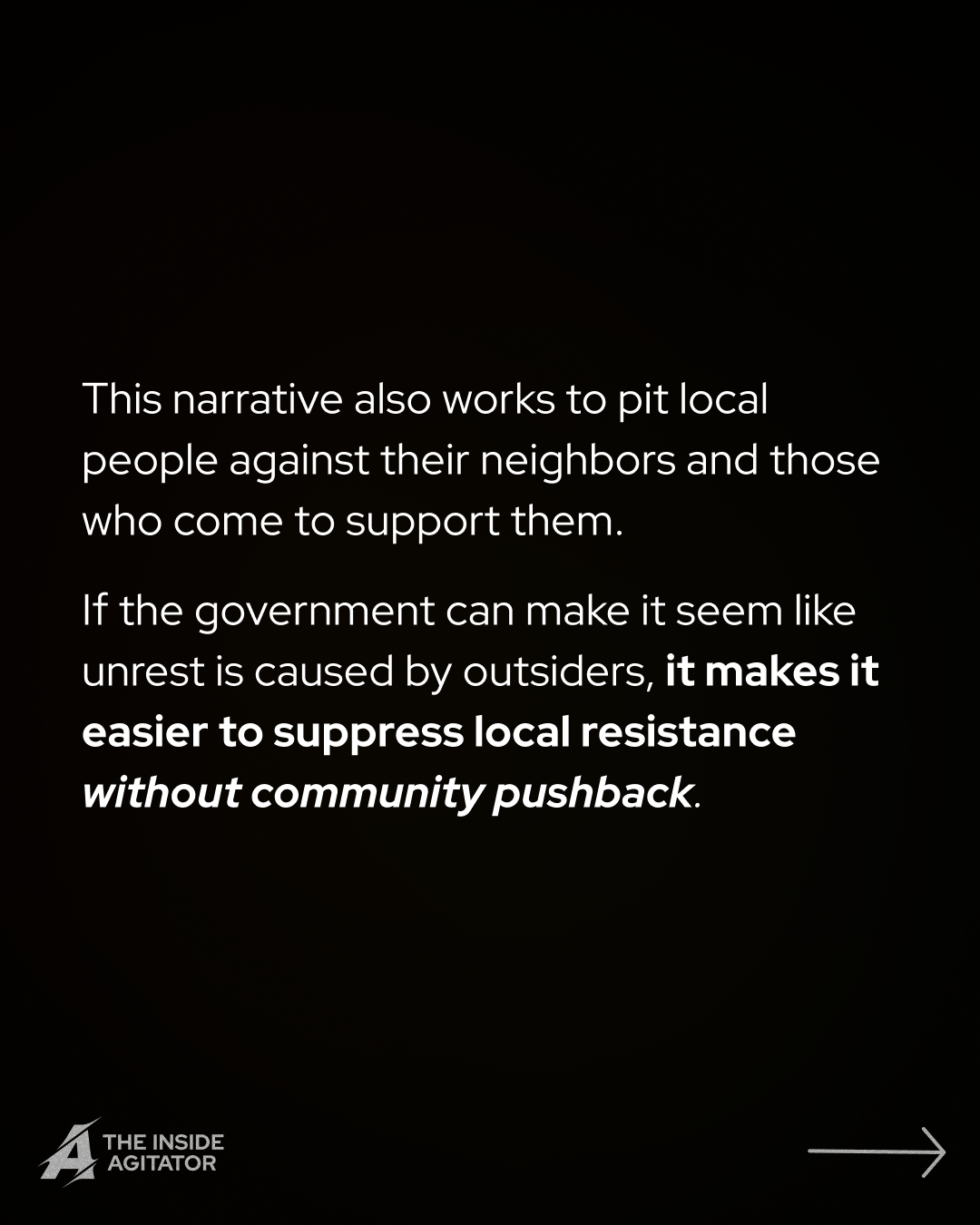
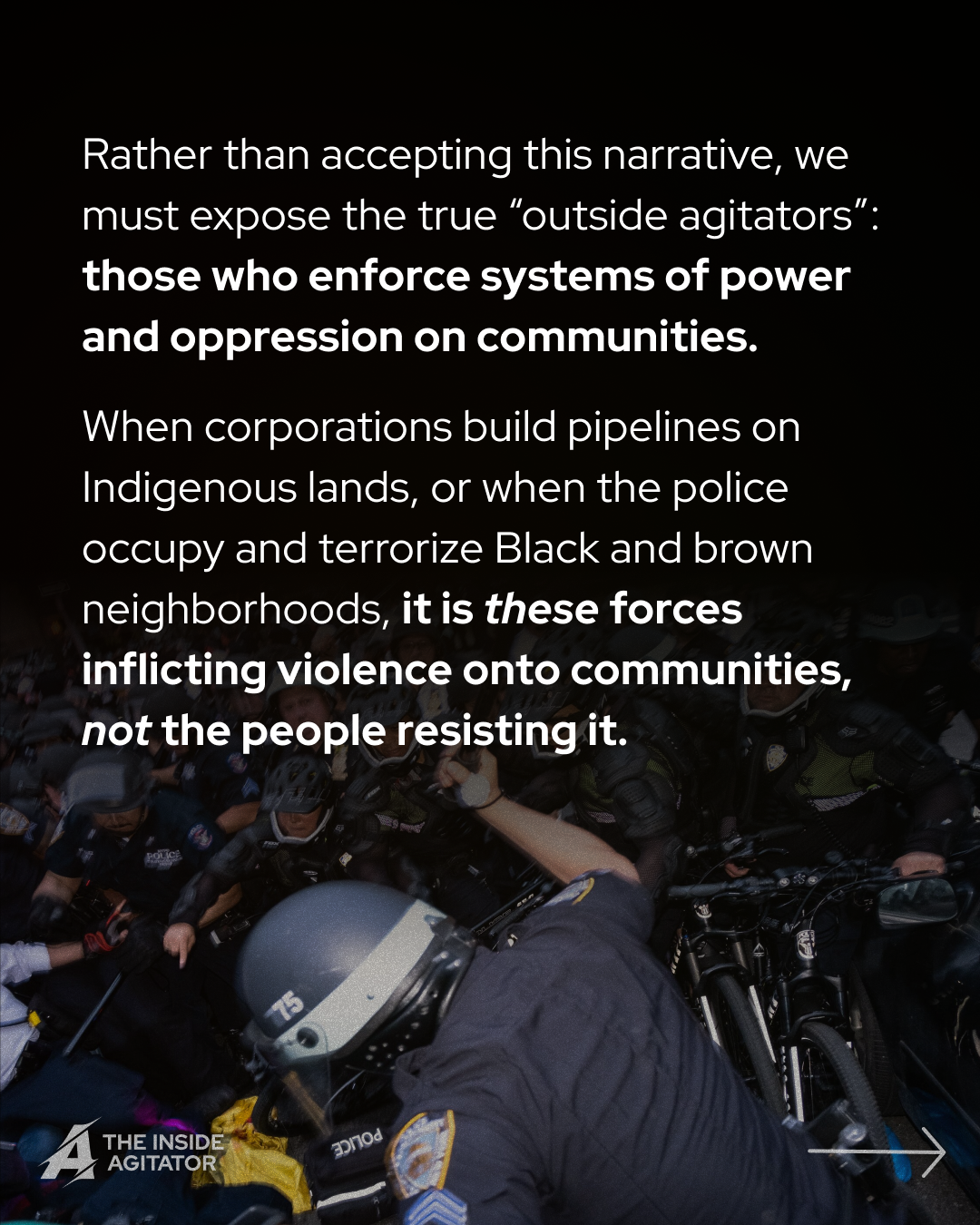
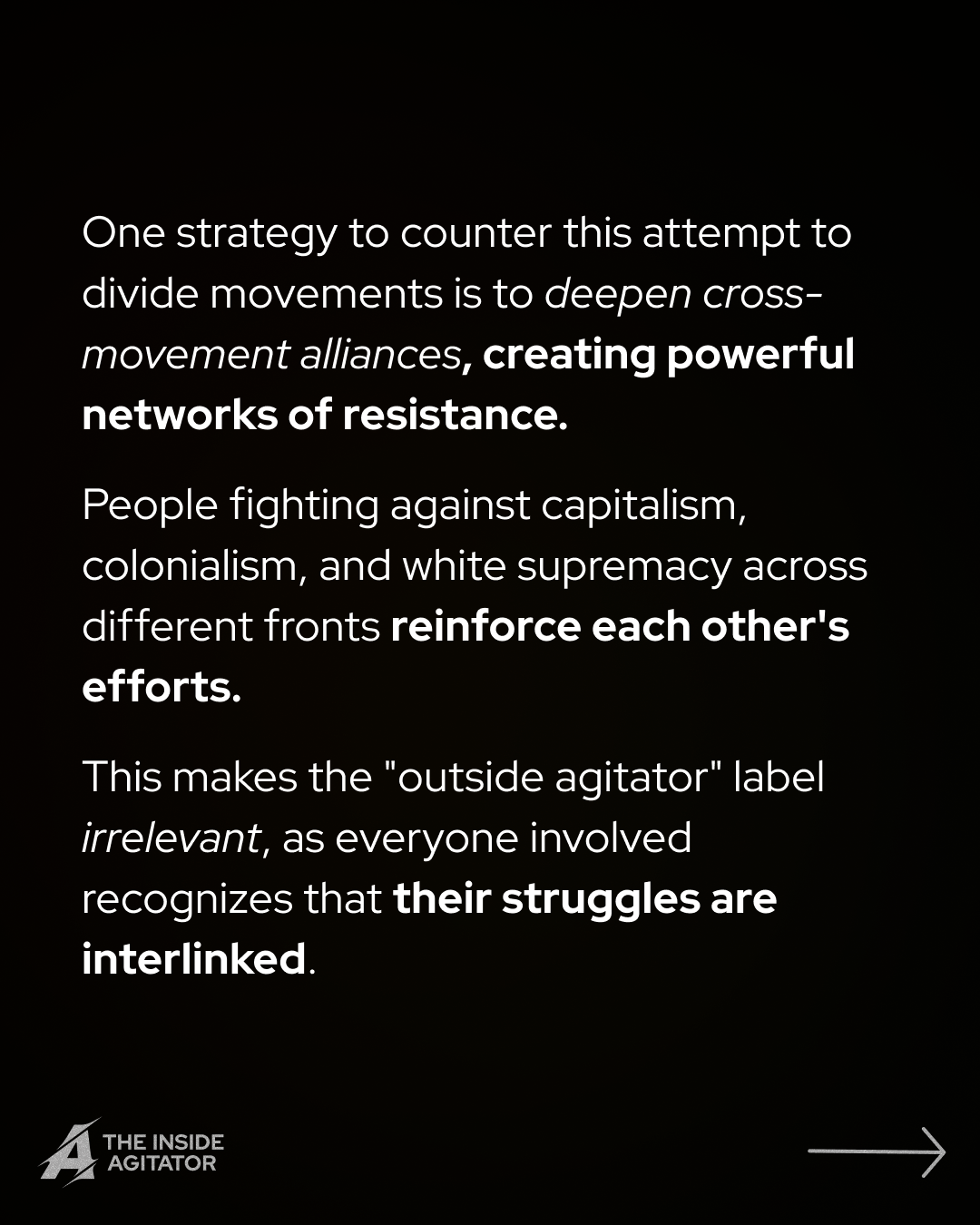
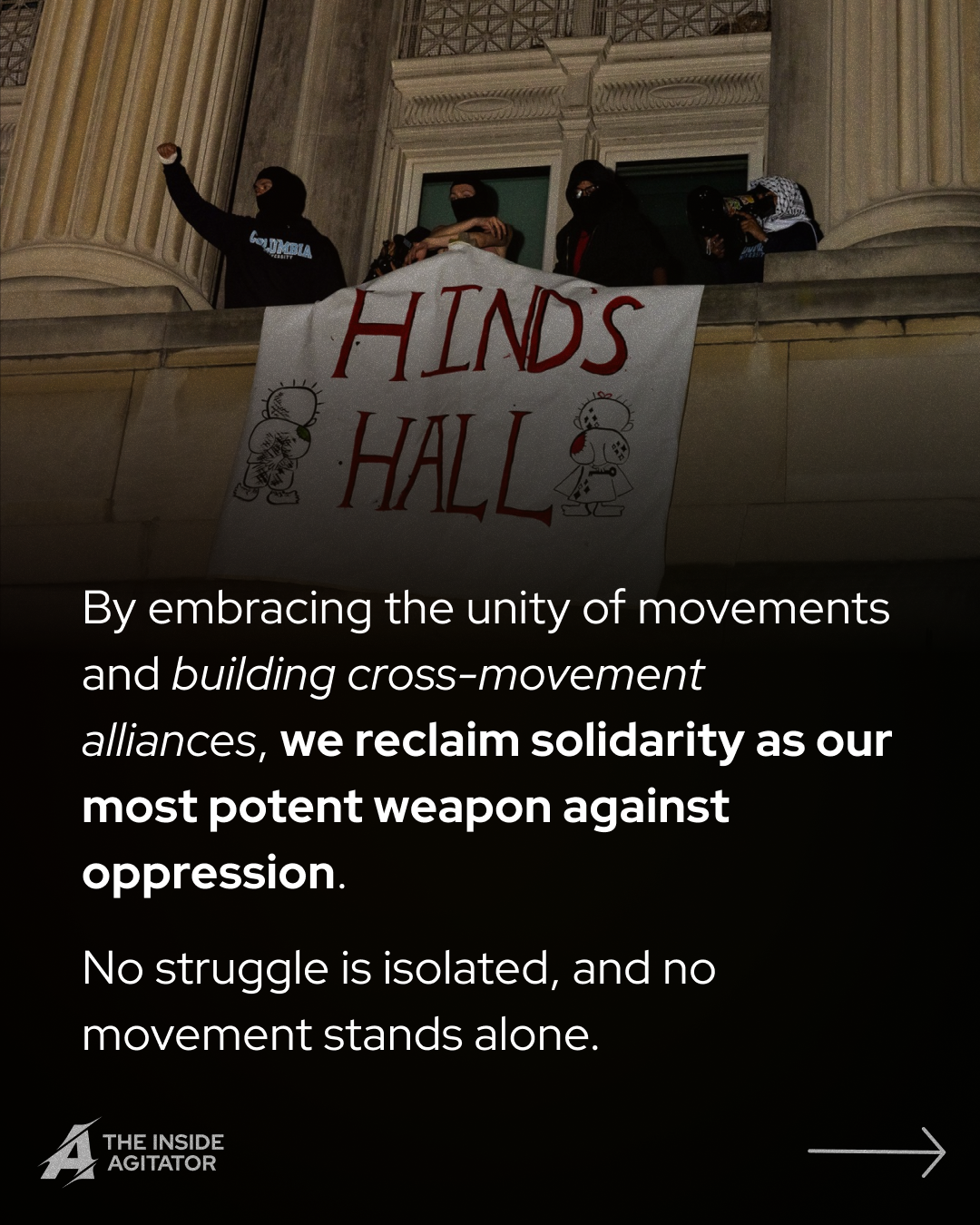
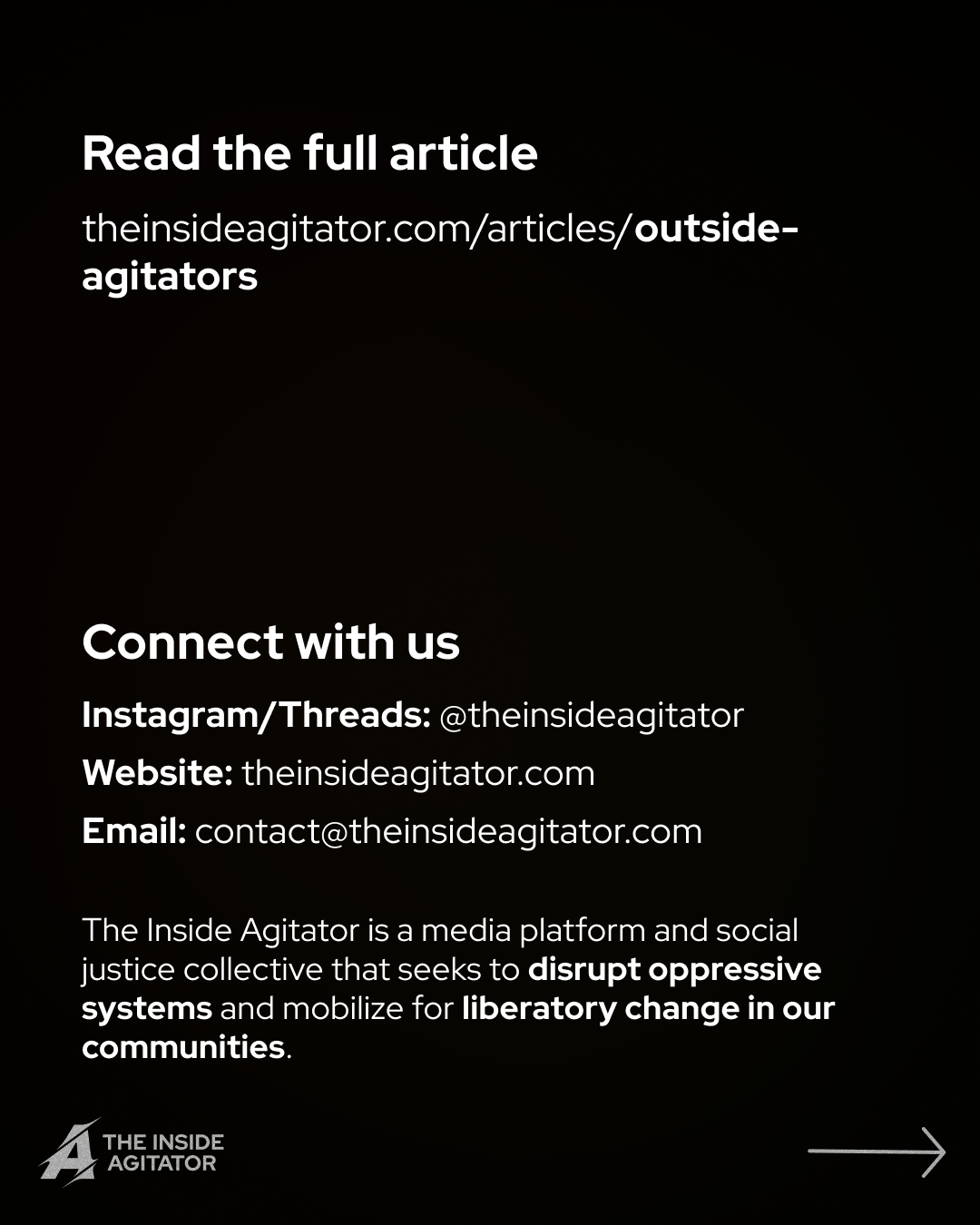
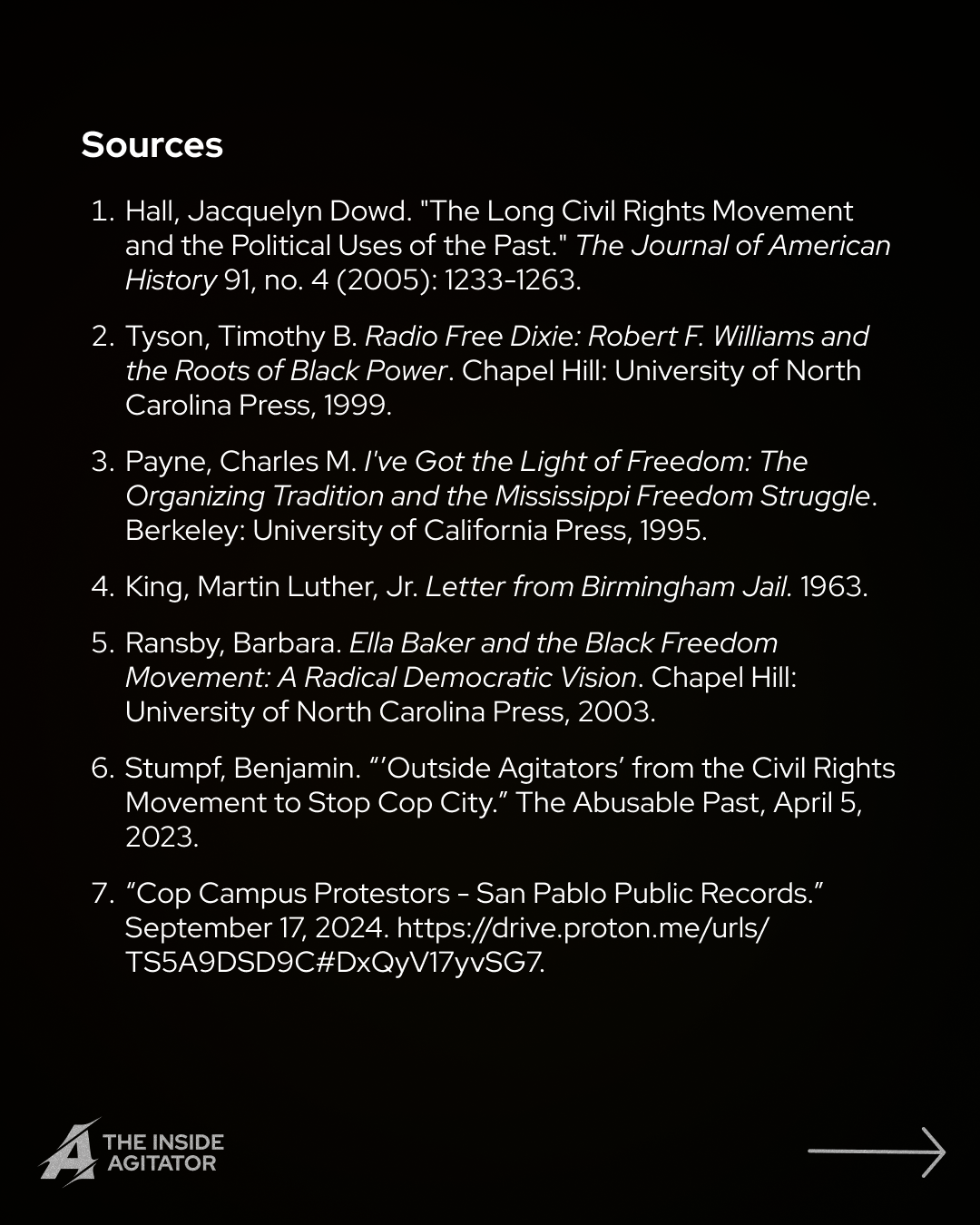
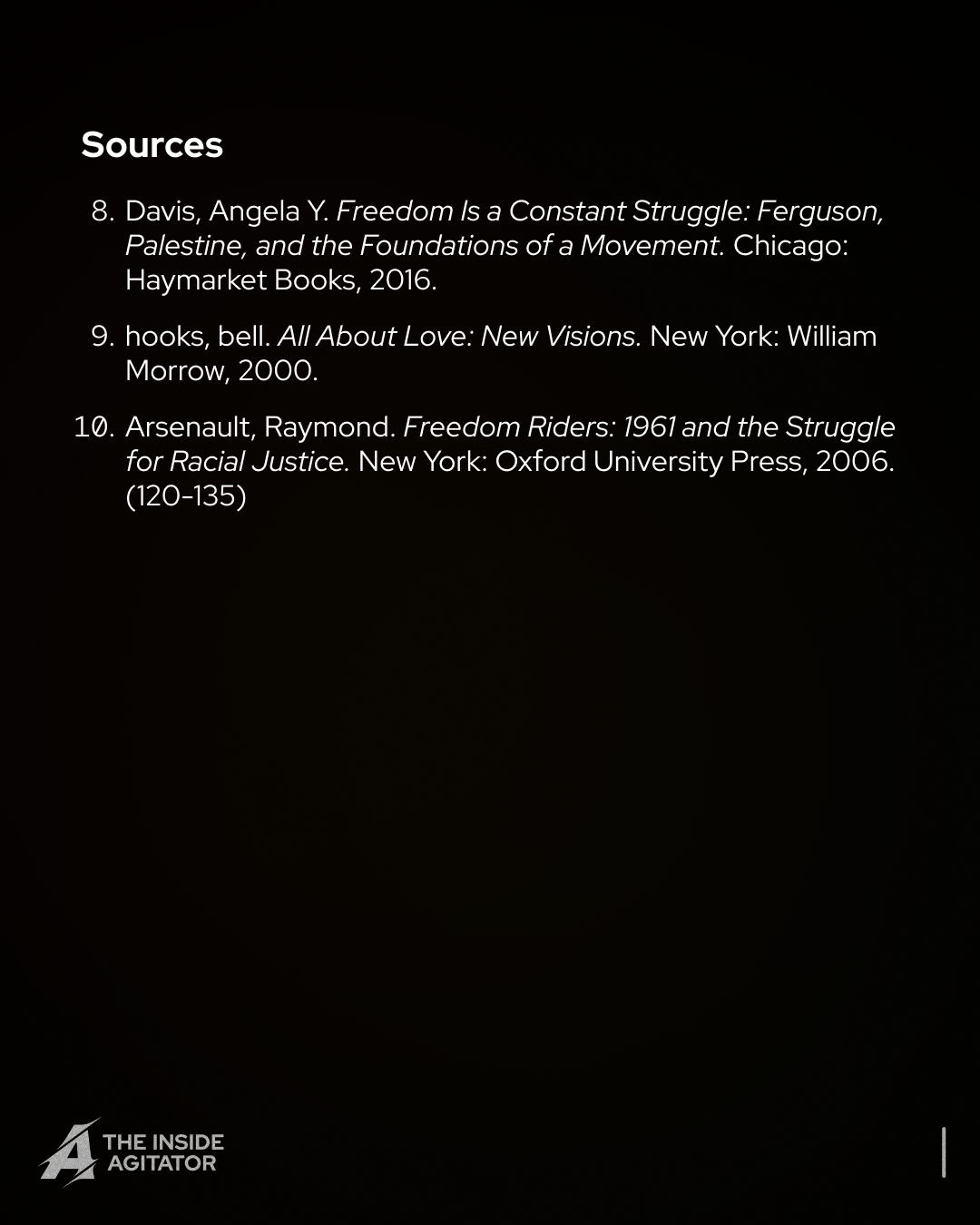
The term "outside agitator" has long been used to discredit activists who fight for social change, branding them as outsiders who threaten community stability. It implies that these activists are not genuinely connected to the struggles they support, instead stirring up unrest for their own personal or ideological reasons.
This framing has deep historical roots and has been used repeatedly to weaken movements during moments of upheaval. To truly understand its purpose, we need to explore its origins, how it functions as a tool of repression, and how activists have fought back by promoting grassroots organizing and solidarity.
A Tool to Undermine Movements
During the Civil Rights Movement of the 1950s and 1960s, segregationists frequently used the "outside agitator" label to discredit activists.1 Southern politicians and the media often accused those fighting for Black liberation, including organizations like the Student Nonviolent Coordinating Committee (SNCC) and people like Dr. Martin Luther King Jr., of being outsiders sent to disrupt Southern communities.2 3 By doing this, they tried to cast the push for racial justice as foreign to Southern life, ignoring the fact that Black communities had been organizing for their rights long before national groups got involved.
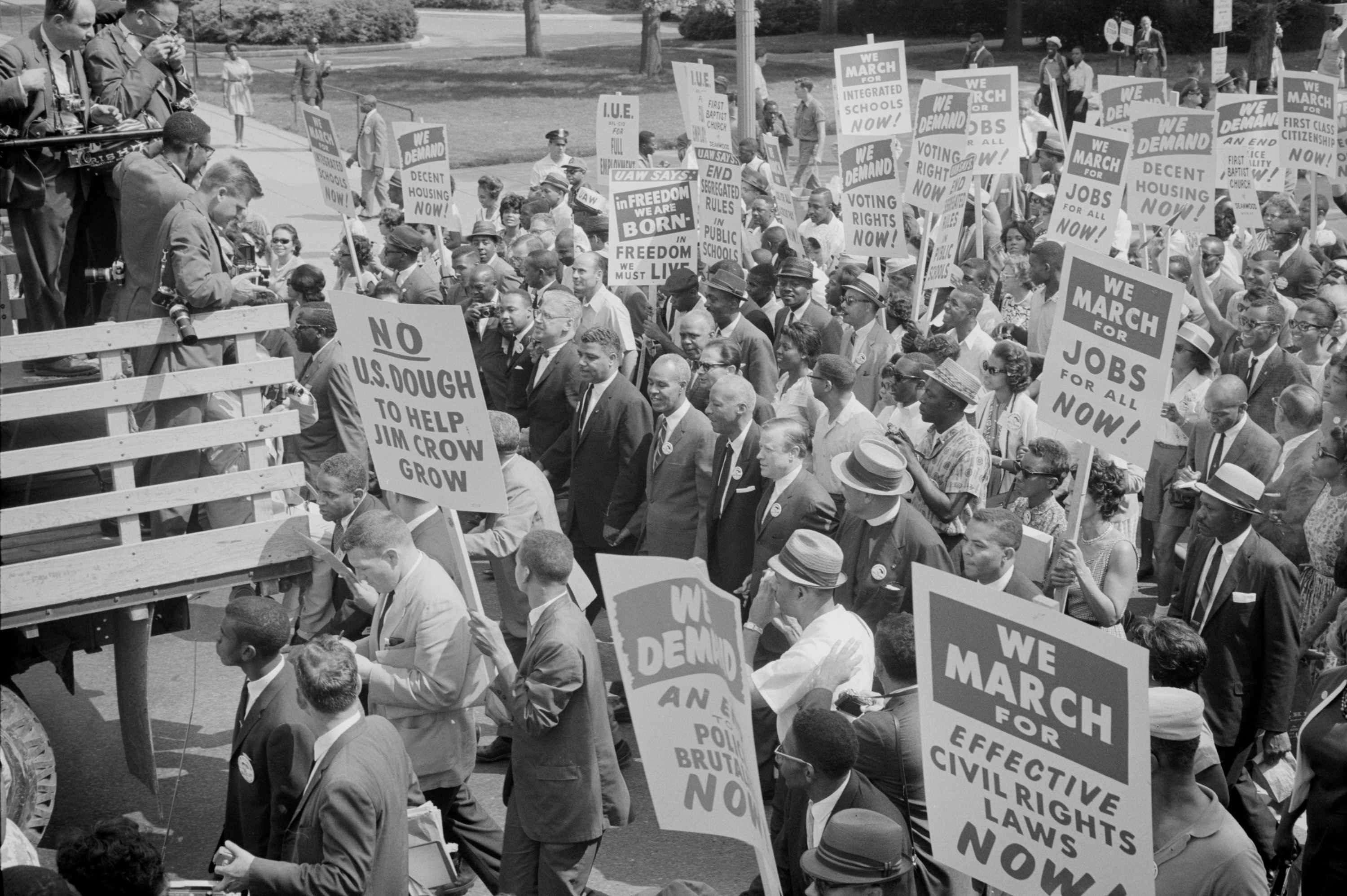
Injustice anywhere is a threat to justice everywhere. We are caught in an inescapable network of mutuality, tied in a single garment of destiny. Whatever affects one directly affects all indirectly. Never again can we afford to live with the narrow, provincial ‘outside agitator’ idea.
Ella Baker, another key figure in the Civil Rights Movement, championed this kind of organizing. She worked tirelessly to build movements led by local communities, particularly emphasizing the power of ordinary people.5 Baker’s work shows that movements are not sparked by outside forces, but grow from within the communities that have long resisted oppression. Outside support doesn’t replace local struggles; it strengthens them.
How the State Uses the "Outside Agitator" Narrative
In recent years, authorities and the media have used “outside agitator” propaganda against the Stop Cop City movement in Atlanta and across the U.S.6 In San Pablo, city officials have attempted to delegitimize and dismiss concerns about Cop Campus by claiming that protestors are outsiders and extremists coming from Oakland and Berkeley.7
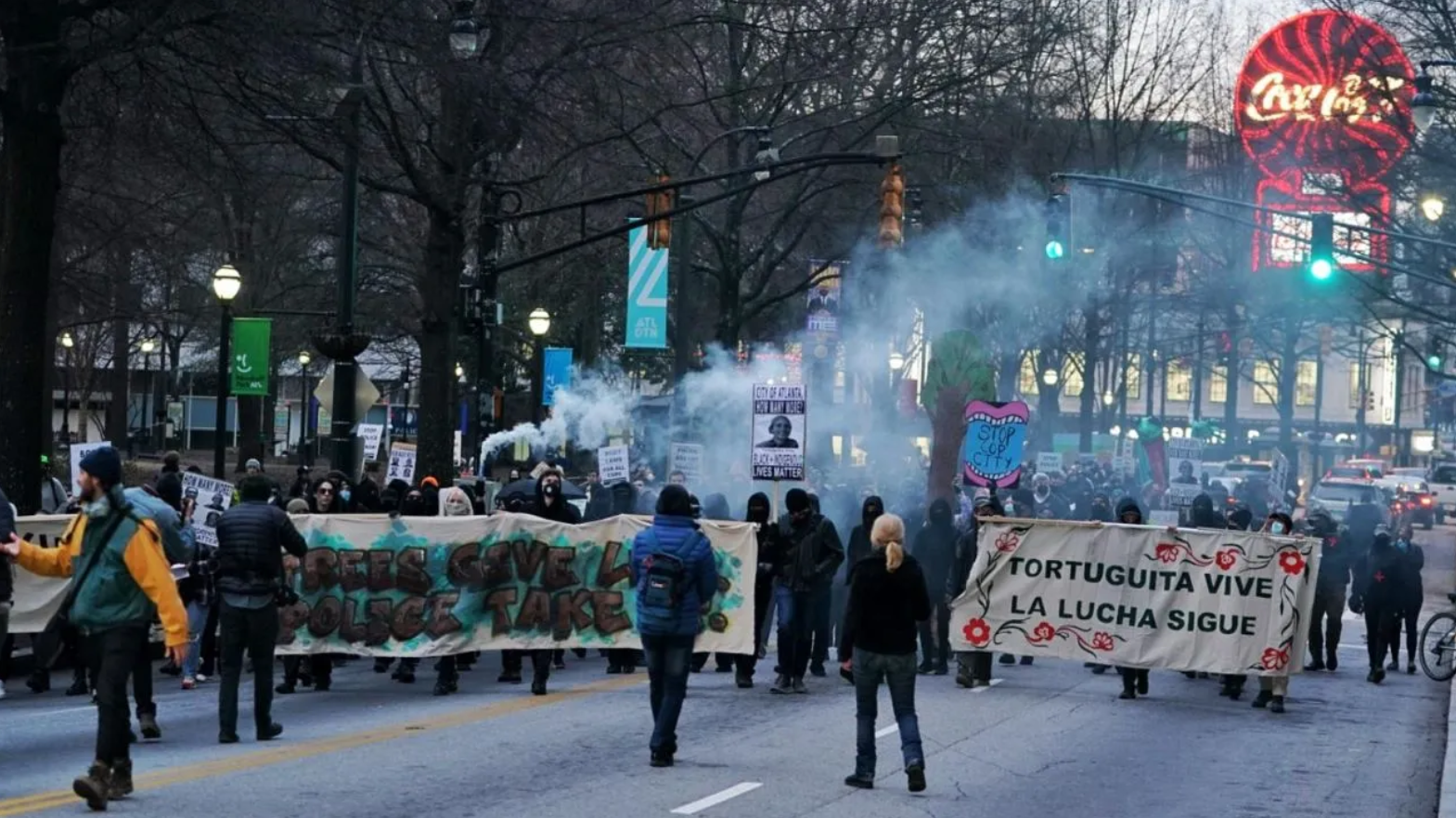
The "outside agitator" narrative gives the government an excuse to escalate its use of force, including police violence and surveillance. By framing the protests as being infiltrated by external radicals, authorities are able to claim that their response is necessary to maintain order. This narrative also works to pit local people against their neighbors and those who come to support them. If the government can make it seem like unrest is caused by outsiders, it makes it easier to suppress local resistance without community pushback.

Reframing the "Outside Agitator"
Rather than accepting this narrative, we must expose the true “outside agitators”: those who enforce systems of power and oppression on communities. When corporations build pipelines on Indigenous lands, or when the police occupy and terrorize Black and brown neighborhoods, it is these forces inflicting violence onto communities, not the people resisting it.
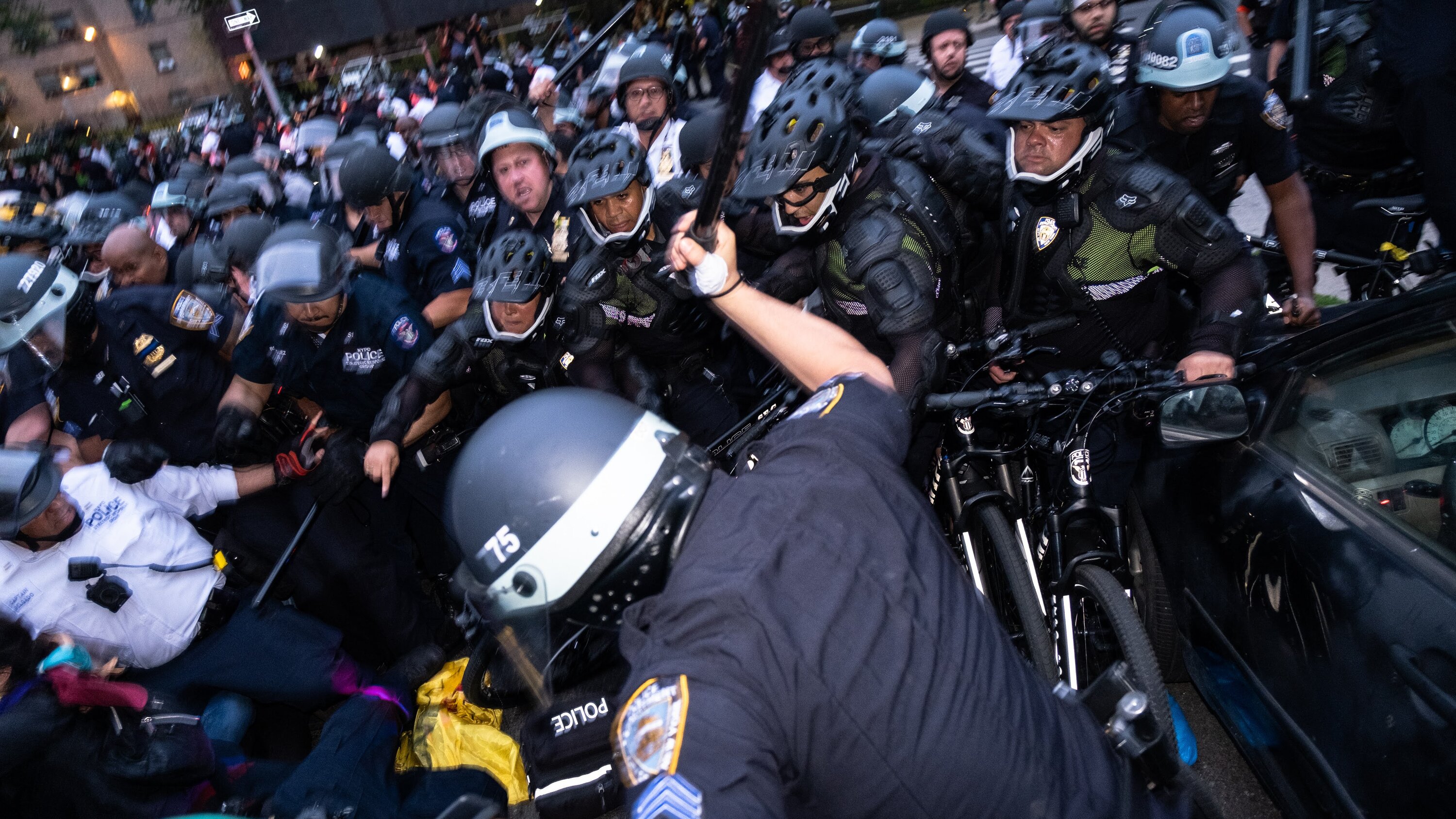
Solidarity Across Movements

Rejecting the "outside agitator" narrative means recognizing that social movements are deeply interconnected. Angela Davis often talks about how transnational solidarity—whether it’s between Black liberation activists in the U.S. and Palestinians resisting occupation and genocide, or between anti-colonial movements around the world-reveals the global nature of oppression and the necessity of shared resistance.8 bell hooks speaks to this as well, in her discussions on radical love and how movements are built through care, mutual aid, and collective support.9
History provides numerous examples where outside support was key to the success of movements. During the Civil Rights Movement, the freedom riders, many of whom came from outside the South, were instrumental in pushing for desegregation.10 Similarly, in the fight against apartheid in South Africa, international solidarity was crucial in applying pressure to the regime. These moments of transnational and cross-regional solidarity demonstrate that support from outside strengthens, rather than undermines, movements.
Building Cross-Movement Alliances
One strategy to counter this attempt to divide movements is to deepen cross-movement alliances, creating powerful networks of resistance. These alliances make it much harder for the state to isolate movements as “outsider-driven” problems. Angela Davis frequently emphasizes the importance of this kind of intersectional organizing, noting that struggles are connected by shared experiences of oppression.
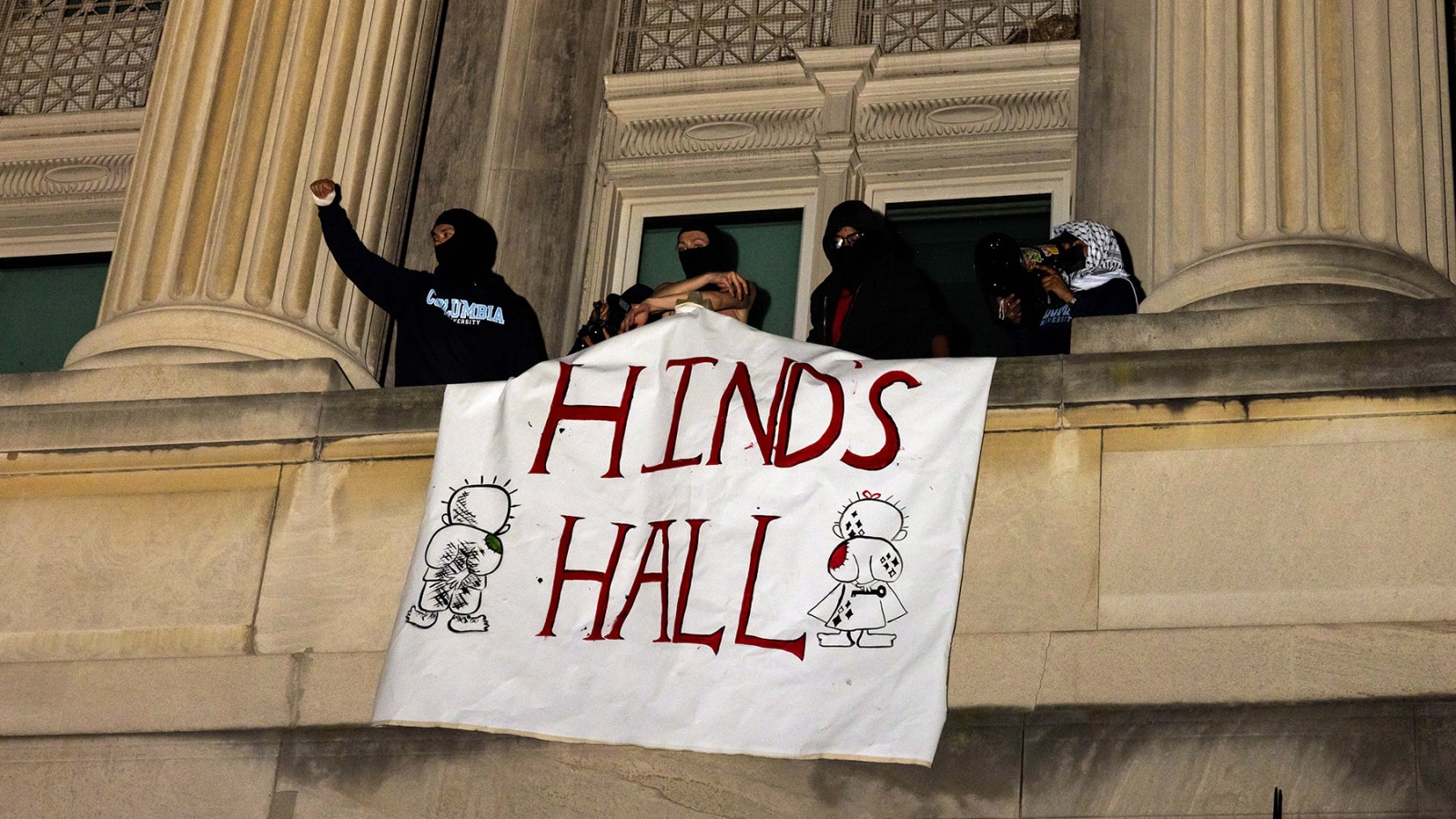
Conclusion: Solidarity as a Radical Weapon
The "outside agitator" trope is designed to divide and weaken movements by playing on social fears of the unfamiliar. But in reframing this narrative, we can expose the real agitators—capitalism, colonialism, and the state. By embracing the unity of movements and building cross-movement alliances, we reclaim solidarity as our most potent weapon against oppression. No struggle is isolated, and no movement stands alone.
Sources
Hall, Jacquelyn Dowd. "The Long Civil Rights Movement and the Political Uses of the Past." The Journal of American History 91, no. 4 (2005): 1233-1263.
Tyson, Timothy B. Radio Free Dixie: Robert F. Williams and the Roots of Black Power. Chapel Hill: University of North Carolina Press, 1999.
Payne, Charles M. I've Got the Light of Freedom: The Organizing Tradition and the Mississippi Freedom Struggle. Berkeley: University of California Press, 1995.
King, Martin Luther, Jr. Letter from Birmingham Jail. 1963.
Ransby, Barbara. Ella Baker and the Black Freedom Movement: A Radical Democratic Vision. Chapel Hill: University of North Carolina Press, 2003.
Stumpf, Benjamin. “’Outside Agitators’ from the Civil Rights Movement to Stop Cop City.” The Abusable Past, April 5, 2023.
“Cop Campus Protestors - San Pablo Public Records.” September 17, 2024.
Davis, Angela Y. Freedom Is a Constant Struggle: Ferguson, Palestine, and the Foundations of a Movement. Chicago: Haymarket Books, 2016.
hooks, bell. All About Love: New Visions. New York: William Morrow, 2000.
Arsenault, Raymond. Freedom Riders: 1961 and the Struggle for Racial Justice. New York: Oxford University Press, 2006. (120-135)